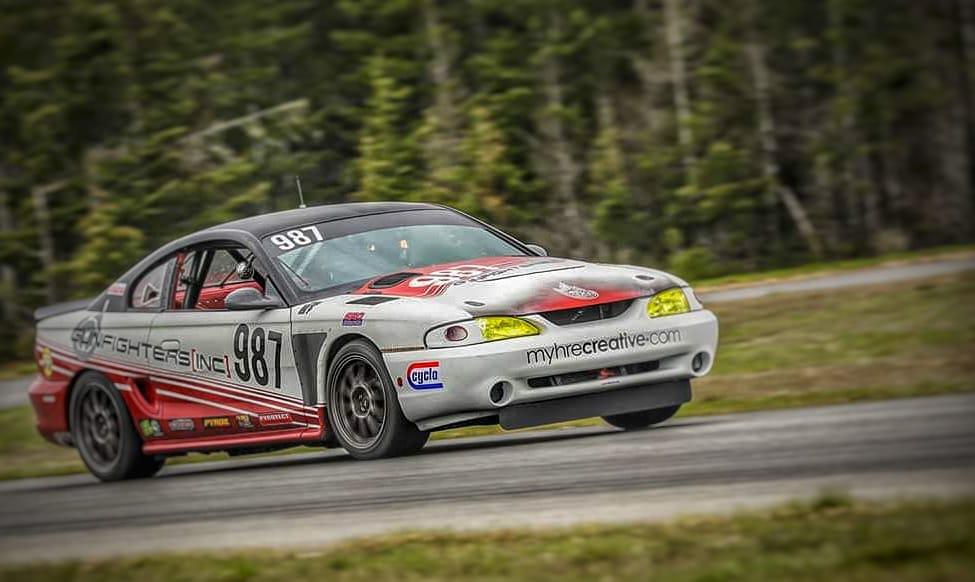Revolution Racing League: Classifying the Cars
Revolution Racing League, their new series, simply classifies teams based on the car and not the driver.
- Class C: Cars can run up to a 225mm tire while limited to carrying 12 gallons of fuel.
- Class B: Cars can run up to a 255mm tire while limited to carrying 18 gallons of fuel.
- Class A: Cars can run up to a 285mm tire while limited to carrying 24 gallons of fuel.
That’s it for the class rules. No multipliers. No driver rankings.
“We class the car,” Adam says, “not the driver.”
“It’s a no-rules series,” he continues. “We wanted to keep it as simple as possible. How can we balance performance in a simple way where we don’t have to bring dynos to the race track?”
The class structure, they explain, should naturally separate cars by on-track performance, with the fastest cars in Class A and the slowest ones in Class C. Have a high-powered car like a Mustang or even a V8-powered Miata? Odds are strong, they reason, that it’s going to run a wider tire and land in Class A.
All cars will run a spec tire, however, with the series mandating the Hankook Ventus RS4. This model has become an endurance racing favorite thanks to consistent handling combined with a very long service life and a wide range of sizes, from narrow 15s to wide 19s.
“We were giving away used tires,” Adam adds, as they’d finish races with Hankooks that still had plenty of life left in them.
Entering a Miata or Civic still running its original engine? To them, that sounds like a natural Class C car–but, of course, teams can run whatever tire sizes they desire.
Those cars, by the way, have to start life as actual production machines–or a suitable body-in-white. If it’s tube-frame, it’s not a street car, they add.
But what about certain “tweener” cars–tube-frame construction yet not overdog performance–like the Lotus 7 or Factory Five 818R? Series officials are looking at a way to welcome them. Perhaps they’ll run in Class A but have to meet Class C prep rules.
A related note about classing from Revolution Racing League’s rule book:
RRL is also committed to examining our rules after each season to determine if rule refinement is needed to enhance the quality of racing in our series. We do not intend to change rules within a season unless a significant safety concern arises that requires an immediate change.
Revolution Racing League will offer annual tech inspections for all cars entered in the series. The goals, Chris explains, are to permit plenty of time for a thorough inspection, allow cars to arrive at the track teched and ready to go, and give teams an opportunity to form a relationship with the area prep shops.
“It’s going to be a very comprehensive check for the season,” Chris notes, “and then you’re good to go.”
Tom adds, “Victory loves preparation.”
Strategy will also be important, as all fueling pit stops shall take 10 minutes, with only one 5-gallon jug over the wall at a time. “That’s part of the fun is getting all these little nuances all figured out,” Adam adds.
Revolution Racing League: Welcoming the Drivers
Revolution Racing League events don’t require any kind of membership, although driver qualifications exist. “We want to be as accessible as possible, but we want people with some experience,” Adam explains.
The group welcomes drivers who have a license from a recognized sanctioning body or previous racing or track experience. Those who are totally new to track driving, he continues, will be invited to participate in a Turn 2 lapping day–a program operated by Tom Pritchett, the third partner in Revolution Racing League.
“If you’re brand-new to a race track,” Adam explains, “you’ll need to do two race days in a race car.”
Revolution Racing League: Announcing the Schedule
Revolution Racing League’s inaugural season currently features six events:

- March 18-20: Portland International Raceway
- May 20-22: Ridge Motorsports Park in Shelton, Washington
- June 10-12: Spokane Raceway, Washington
- July 8-10: Oregon Raceway Park in Grass Valley
- August 5-7: Ridge Motorsports Park
- September 9-11: Spokane Raceway, Washington
The September contest in Spokane will feature 24 continuous hours of racing where the others will see action stop for the night. “A lot of these tracks,” Tom notes, “you can’t race all night.”
Some events will hold two endurance races over a weekend or, he explains, a parc fermé will be called to pause the action during those nighttime breaks to create a longer enduro spanning two days.
In parc ferme format all cars must park without any work taking place.
Find full details at the Revolution Racing League website.





































